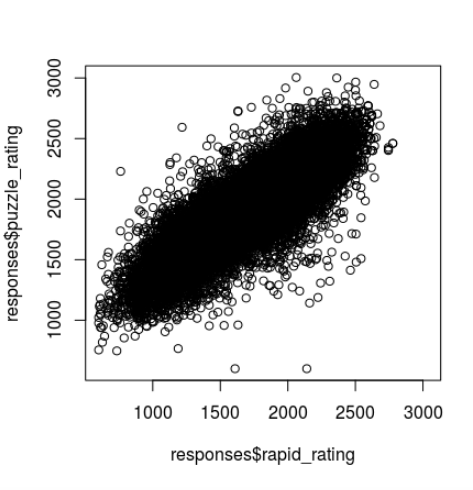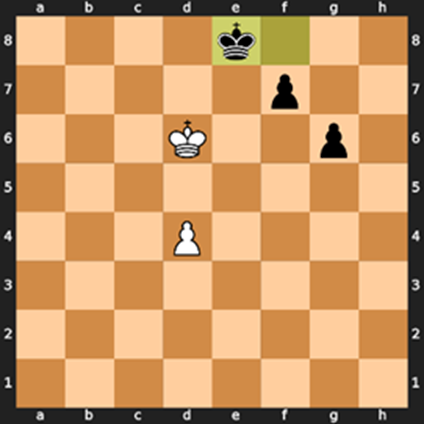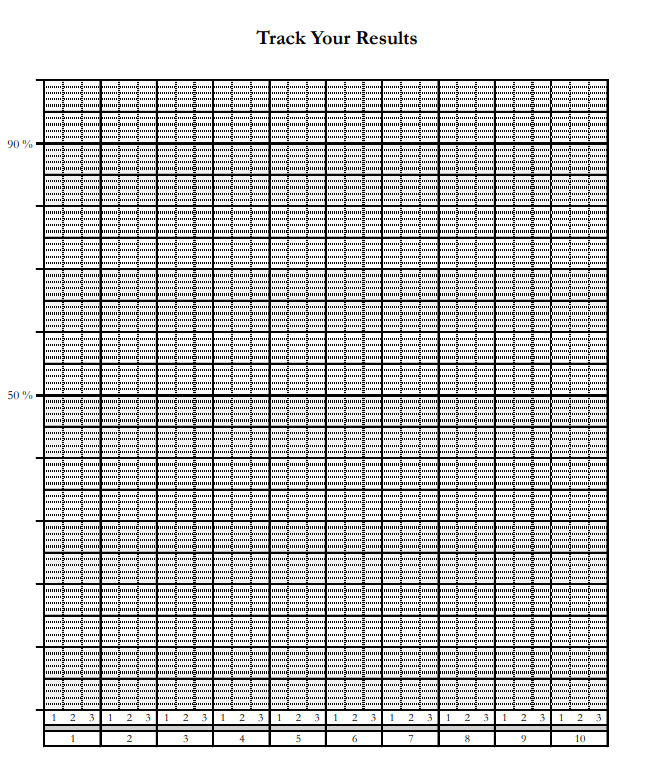
The Tactics Ladder - A 16,000 Puzzle Project... (Free pdf-Preview)
In this post you can read the introduction to my new tactics series based on the best puzzles from the Lichess puzzle database.Many improving players are told to use either Yusupov's 9-book series or the Woodpecker Method by Axel Smith and Hans Tikkanen to improve their tactical skills. These books are however hard for most intermediate players. The idea behind the woodpecker method is quite interesting, which is to repeat the puzzles 7 times in cycles. The book however has 222 easy puzzles, before the level gets harder.
The goal with this workbook series is to create training material that makes it possible to use spaced repetition cycles on a large number of puzzles on an even level.
To do this I have used the Lichess puzzle database. It contains 2,132,989 chess puzzles that are rated and tagged. This has allowed me the opportunity to select puzzles of the same difficulty throughout this book. In this way, you should not experience that you run your head against the wall, but that you reach a good flow while solving.
The Lichess data suggest that there is a good correlation between puzzle-solving abilities (as reflected by puzzle score) and chess-playing ability (as reflected by the rapid rating).
Relationship between Lichess Puzzle rating and rapid rating.1
Based on the data and my own experience with the puzzles, I am rated 1852 FIDE and my Lichess puzzle rating is around 2200-2300. I have made this categorization to label the books accordingly to FIDE-rating:
- 1200 Puzzle-rating = 800 FIDE – Beginner
- 1400 Puzzle-rating = 1000 FIDE – Beginner
- 1600 Puzzle-rating = 1200 FIDE – Beginner
- 1800 Puzzle-rating = 1400 FIDE – Intermediate
- 2000 Puzzle-rating = 1600 FIDE – Intermediate
- 2200 Puzzle-rating = 1800 FIDE – Advanced
- 2400 Puzzle-rating = 2000 FIDE – Expert
- 2600+ Puzzle-rating = 2200 FIDE – Master
This is not science but can be used as a guide. I plan to make two books (one book on the opening/middlegame and one on the endgame) for each step with 1000 puzzles in each. If I succeed, The Tactical Ladder series will be 16 books and contain 16,000 puzzles. I have decided to make the intermediate books (1400-1600 FIDE rating) first and then we will see how it goes. This will, to my knowledge, be the largest chess puzzle collection ever published in print (if I succeed). It will also give the reader a chance to find a book that fits perfectly, not too hard, not too easy.
Puzzle selection
The book contains 10 chapters with 100 puzzles in each. Each chapter has a specific theme, while the last chapter is a test with mixed puzzles. The Endgame books will focus on the motifs that occur in the relationship between the pieces, e.g. tactical patterns that occur in Rook endgames. The middlegame and opening books will focus more on specific motifs like forks, pins, skewers, defensive moves, and so on.
To sort out bad puzzles I have used the Lichess data. The user upvotes and downvotes each puzzle after each try. The puzzle is then given a popularity rating. Lichess writes the following:
“Popularity is a number between 100 (best) and -100 (worst). It is calculated as (upvotes - downvotes)/(upvotes + downvotes), although votes are weighted by various factors such as whether the puzzle was solved successfully or the solver's puzzle rating in comparison to the puzzle's”.2
For this volume, I have only included puzzles that meet the following requirements:
- 85 or above popularity score
- 100 or above-completed tries by users
This should ensure that you will be presented with the most instructional and human-liked puzzles selected from the 2,1 million puzzles in the database. In other tactics books, we trust the author’s judgment while in this book you will be presented puzzles tested over 100 times by fellow chess players.
The solutions
The solutions given to the puzzles are without any explanations, variations, and annotations. The solutions are “only moves”, which means that you need to find them to solve the puzzles correctly. The solution stops when there are two or more moves to play that give you an edge. You might find other solutions, but one of your variations should match the solution given in the book.
If you are searching for a book with explanations and guidance, this book is not for you. Should you not understand a specific solution I recommend that you try to understand why your solution fails. Online tools like Chessify, DecodeChess, and Chessvision.ai might be helpful in this regard. The plan of publishing a series with 16.000 puzzles makes it impossible to add annotations to the solutions.
Donation to Lichess
I am committed to donating 10% of my share of the royalties back to Lichess. I want to do this to help maintain Lichess as a free alternative and as a sign of gratitude for making the puzzles available for free for the chess community. I will adjust my monthly donations via my account to match the 10%.
The proposed method
I suggest that you solve each chapter 3 times. The best method is to write down the solution on paper and check the solutions afterward. After you have checked the results, you can fill out the spaces below the puzzle, so you can see how you have scored:

White to move.
Results: 1. [ - ], 2. [ x ], 3. [ x ], 4. [ x ], 5. [ x ]
After the three cycles, I recommend that you review the puzzles you failed one or more times during the first three cycles two times.
The book includes a tracking table at the back of the book where you can fill out your results. Aim for scoring 90/100 puzzles or 90 % in each chapter. I suggest that you give 1 point for having found the full solution, and 1⁄2 point if you write the correct move but do not write down the full solution.

Time usage
Due to a large number of puzzles, I suggest that you aim for a flow of spending around 2 minutes per puzzle on average. The aim is to learn a large number of motifs and patterns, so you cannot spend 20 minutes on every puzzle unless you make this book your full-time project. Do not skim through the puzzles either.
With the proposed speed, you should solve a chapter in around 3 hours and 20 minutes. The following cycles should be faster since you hopefully will pick up some of the patterns from the first trial.
Remember that this is just a suggestion.
Other methods
You can also choose to use the Woodpecker Method (7 cycles), your own method, cut the book into flashcards and write your annotations, or just solve all the puzzles the old-fashioned way. You ultimately decide.
Spaced repetition
Research into the field of learning has shown that it can be beneficial to let a bit of forgetting to happen before you test your ability to retrieve the information again.
For this reason, it is suggested that you space out the cycles of each chapter, so that there passes at least one week between the first and second cycle, and one month between cycles two and three. If you want to read more on this subject, I recommend that you go to:https://bjorklab.psych.ucla.edu/research/
“The effects of distributed practice on learning are complex. Although massing practice (for example, cramming for exams) supports short-term performance, spacing practice (for example, distributing presentations, study attempts, or training trials) supports long-term retention. The benefits of spacing on long-term retention, called the spacing effect, have been demonstrated for all manner of materials and tasks, types of learners (human and animal), and time scales; it is one of the most general and robust effects from across the entire history of experimental research on learning and memory.”3
I believe most chess players want to improve their skills long-term, so it makes sense to train the retrieval muscle by letting forgetting happen before a new cycle begins.
This is an experiment
The proposed method is not scientifically proven, but I would like to collect data if you decide to follow through and finish the book in the described manner. If you want to participate and contribute, please write to saychess1@gmail.com and I will get back to you.
Book vs. tactic trainer
Some might object and think why not just use a tactic trainer online? You definitely can do so, but the book format offers some advantages:
- No digital distractions (you might click on another tab if you get a hard puzzle)
- One thing to focus on
- The puzzles are presented in an organized manner
- The puzzles are sorted by subject and popularity
- On an online trainer the level of the puzzles increases/decreases in difficulty over time
- The feeling of success when finishing a book is not to be undervalued
If you want to download a free pdf with 100 test puzzles, please visit:
For links to Amazon: https://saychess.substack.com/p/-the-tactics-ladder-out-on-amazon
/Martin
You may also like
 SayChessClassical
SayChessClassicalNormalized Popularity Scores of Selected Chess Puzzle Themes on Lichess
The other day I entered into a debate with GM Jacob Aagaard and IM Andras Toth on X about whether ta… FM CheckRaiseMate
FM CheckRaiseMatePuzzles vs. Games
These positions are easy puzzles but almost no one got them right in a real game SayChessClassical
SayChessClassicalHow to Make a Custom Chessable Opening Course Based on Win%
I have long wanted a simple way to play the opening without learning GM-lines, so I created an easy … Nytik
NytikHow I Went From 2000 FIDE to 2000 FIDE in just 3 years (as an adult)
Maximal time wastage is a science, not an art SayChessClassical
SayChessClassicalAre Online Chess Players Trapped Pigeons?
The Increasing Gamification of Online Chess SayChessClassical
SayChessClassical